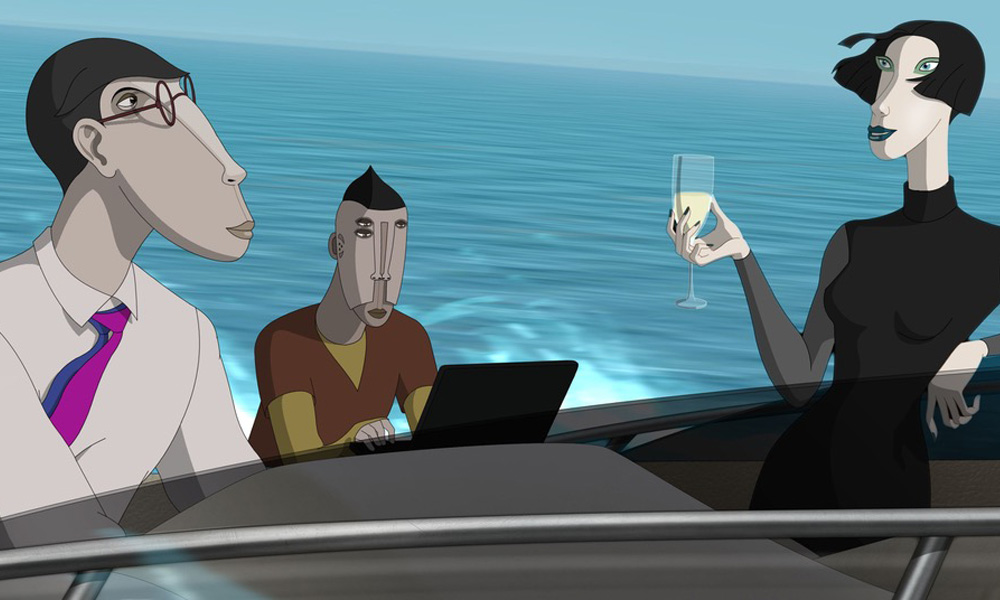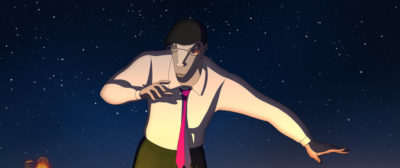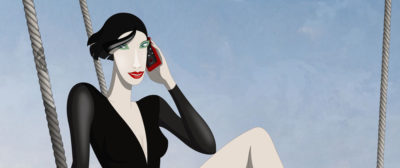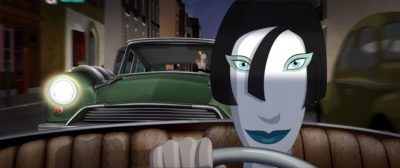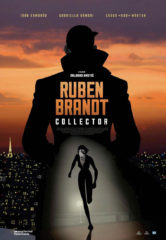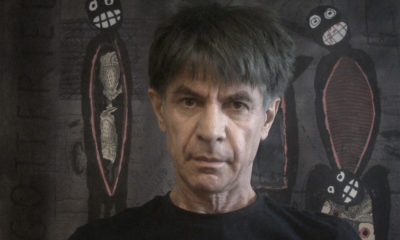“Art is the key to the troubles of the mind.” One of the characters actually says that line in Milorad Krstic’s highly original new Hungarian animated feature Ruben Brandt, Collector.
He may also be talking about Krstic’s beautiful new work, which is unlike anything you will probably see on the big screen this year.
The plot centers on a famous psychotherapist who sets out to steal 13 of the world’s most famous paintings to stop the nightmares that haunt him at night. He and his gang of thieves, accompanied by four of his patients, manage to steal some of the most prized works of art from the Louvre, Tate, Uffizi, Hermitage and MoMA.
As the film’s writer-director puts it, “It’s an exploration of art, from the point of view of a serial robber,” according to Krstic. “I didn’t want an art-house film about art. Instead, I wanted a crime film about art.”
The multi-talented artist, who grew up in Slovenia and lives in Budapest, tells us his goal was to use animation to create an action-thriller or a noir movie, free from cartoony exaggerations. “About eight years ago, I put together some of the first graphic images from the movie on my blog,” says Krstic. “That was my method to create the interesting graphic images, and then find appropriate places for them in the storyboard.”
He says he knew from the beginning that his film was going to be told from the art thief’s perspective. “I also wanted my graphic world to be distinctive and unusual,” he adds. “But at the same time, I wanted the characters to move in a standard way, following the usual rules of anatomy and the natural world. Otherwise, the movie couldn’t be really persuasive as a crime film.”
In 2011, Krstic wrote a play based on the concepts that would emerge as the moive. “The play, which was also titled Ruben Brandt, Collector, premiered in Kunsthalle, Budapest,” he notes. “The director and the choreographer was Csaba Horváth. The performance was fantastic, and at that time, my script was significantly different. Later, we started to develop the animated film.”
2D Is Key
With a price tag of $4.2 million, the movie was funded by the Hungarian National Film Fund (75%) and the Hungarian Film Incentive (25%). It took Krstic and his team of about 110 artists four years to complete. “We had to build a team for this production, so we found several very good animators and other experts in the field. Thanks to the enthusiasm and dedication of everyone on the team, we were able to finish the project. We used several animation techniques as hand-drawn animation (TVPaint), computer animation (Anime Studio), digital compositing (After Effects), 3D animation (Maya, Blender). Throughout the whole process, our intention was to sustain the feeling of 2D animation.”
Filmgoers may notice a wide variety of familiar artistic influences on display in Ruben Brandt. Krstic says he grew up drawing and painting and absorbing all the many different artistic masterpieces he encountered. “I mean everything from Lascaux and Altamira cave paintings to Rembrandt to Picasso, from Venus of Willendorf to Michelangelo to Henry Moore,” he says. “In this movie there are tens of remakes of famous paintings, and tens of references to movies I like. It was always a challenge for me to repeat the power and the energy of the originals, and to give them fresh forms and put my own personal stamps. I’m not satisfied to just copy other artists works.”
For Krstic, whose previous foray into animation was the award-winning 1995 short My Baby Left Me, one of the main challenges of the project was experimenting with a longer format, while still keeping an auteur’s touch. “It had to do with whether I was able to make an animated film which could keep attention of the audience for 90 minutes,” he explains.
When asked about his animation influences, Krstic says he considers the scene in which Bambi calls for his dead mother one of the most heartbreaking ones in the history of animation. “I grew up watching Tom and Jerry, Peter Pan and Popeye cartoons on TV,” he says. “Some of my all-time favorites are Bugs Bunny, Daffy Duck, Pink Panther and [Osvaldo Cavandoli’s Italian series] La Linea.”
Ruben Brandt, Collector debuted at the Locarno festival and will be released in Hungary in November and in China (through Lemon Tree Media) later this year. Krstic hopes the film finds a wide audience around the world in the months ahead. “People sometimes laugh during screenings, but at the end they seem to be seriously affected by it,” notes the director. “Most of them tell me that would like to see it one more time. Jacque Tati once said that he wants the film to start when moviegoers leave the theatre. That is the ideal result for me as well. I would like it if the movie inspires people to discuss it afterwards.” He adds modestly, “And I do hope they won’t feel as if they had wasted an hour and a half of their lives!”
Now that he has this major stylish feature under his belt, does he have any tips for future filmmakers? “I have a litmus test or indicator which easily shows whether you were born to be an animated or a live-action movie maker,” he offers. “If you prefer vintage posters of, for example, French Riviera more than actual photographs of that location, you are destined to work in animation! Don’t forget that in the animation world, imagination and beauty are beyond logic and truth.”
Ruben Brandt, Collector premiered at the Locarno Festival this month.
“If you prefer vintage posters of, for example, French Riviera more than actual photographs of that location, you are destined to work in animation!”
Writer/director Milorad Krstic




